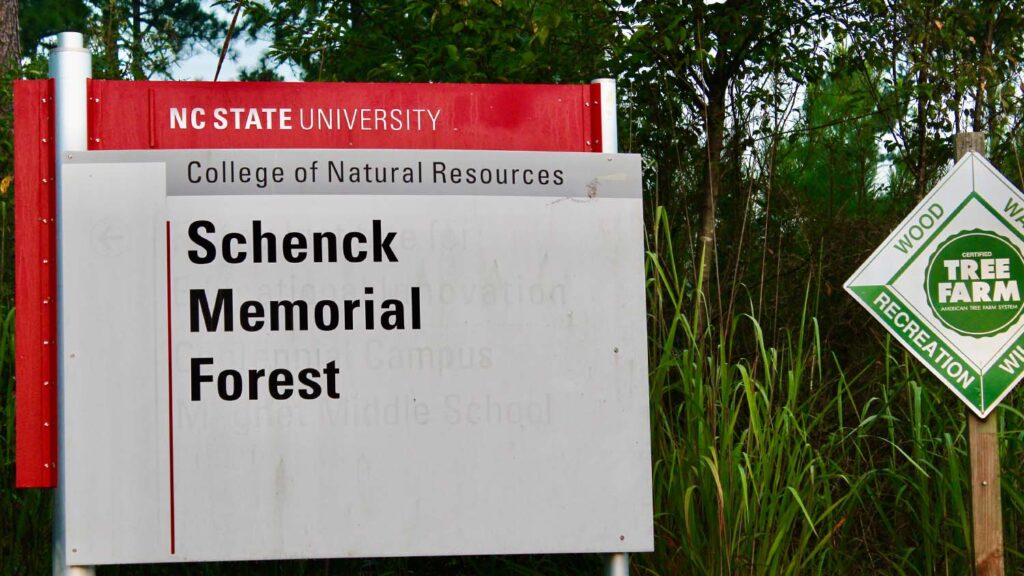History
A rich legacy of American forestry education and sustainable practices

The land where Schenck Forest now sits was once part of the Camp Polk Prison Farm. But in 1937, the state of North Carolina transferred about 300 acres of the farm to NC State’s College of Natural Resources, then known as the School of Forestry. The college subsequently named the land “Richland Creek Forest.”
While the land was depleted and eroded at the time, NC State planted 92 acres of loblolly pine — and a small tract of longleaf pine — in the forest. Luckily, the moisture conditions after planting contributed to an almost 100% survival rate, allowing the future of the forest to take root.
In 1939, the State Highway and Public Works Commission officially deeded the land to NC State. However, despite the excitement surrounding the change in ownership, the forest struggled with several moth infestations and bark beetle attacks in the following years. Thankfully, though, the forest eventually recovered.
Nearly two decades later, in 1955, the NC State Board of Trustees renamed the forest in honor of Dr. Carl Alwin Schenck, a forester known for his work at the Biltmore Estate and the founder of the Biltmore Forest School, the country’s first practical forestry school. Schenck’s ashes were scattered in the forest following his death that year, and a bronze memorial plaque was installed and mounted on a granite boulder near the picnic area.
The renaming of the forest was largely spearheaded by Biltmore School alumni, and through their efforts, they also established two endowed professorships, numerous scholarships and a room in the college’s library to house the Schenck memorabilia.
Like its namesake, Schenck Forest is known for its research capabilities. One of the first research projects at the forest took place in 1967 when two stream gauging stations were installed, one in a forested area and one in an agricultural watershed, to study the impact of land treatments on water quality and runoff. In the same year, a 25-acre stand of mature pine and hardwood trees was designated a natural area and registered with the Society of American Foresters.
Unfortunately, in 1973 a serious bark beetle attack occurred in the natural area, and the decision was made to salvage three acres of pine and hardwood because of its high value. Two years later, the area suffered sporadic spot attacks. Despite these struggles, NC State made several upgrades throughout the decade to encourage increased visitation to the forest.
In 1976, Larry Jervis, who was then forest manager, collaborated with students to build a sheltered picnic area and a parking area. The group also constructed a one-mile interpretive trail loop beginning at the picnic area. The picnic area now requires a reservation and is used year-round for professional meetings, retirement parties, club and group meetings and even weddings.
Through exchanges with the College of Agriculture and Life Sciences, plus impacts from highway, sewer line and flood control projects, the forest was reduced to 245 acres by 1980. But in the following decades, the forest continued to grow in popularity and became a community staple for both NC State and Raleigh residents.
The NC State community and Raleigh residents have a history of research and leisure activities at Schenck Forest. Hikers, picnickers and outdoor enthusiasts visit for recreational use. Meanwhile, NC State faculty, staff and students use the forest for field laboratories, demonstrations of forest practices and research projects to supplement classroom lectures. The forest provides a valuable space for education in the natural sciences and everyday enjoyment.
Today, there is a place for you at Schenck Forest — whether you choose to hike the Raleigh Green Belt Trail along Reedy Creek; to visit the arboretum and honor the university faculty and families who are commemorated through plantings; to picnic with family and friends; or to observe the local plants and wildlife.